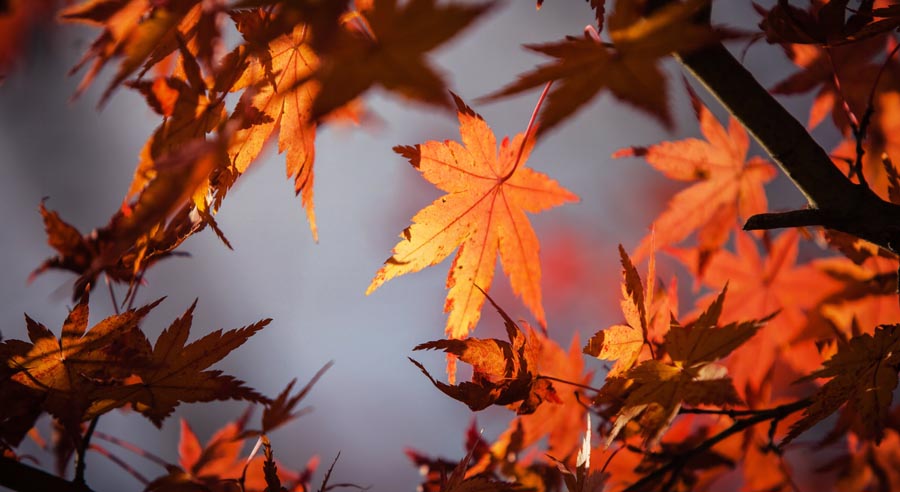
There are very few more pleasurable hours than those spent relaxing in a hammock.
And they are made much more enjoyable when you have the ideal conditions, a blue sky, warm sun, no rain and good hanging points for your hammock!
And it is that last point that we will focus on today.
What trees are the best for hammocking?
Let’s take a closer look…
Happy and healthy trees are best for hammocking, so trees with thick trunks, strong branches and lots of vibrant foliage. If a tree has dead or brittle branches on it, or on the ground around it, and/or lots of pests on it, it is not a good choice to hang your hammock from. Tree species that typically good for hammocking include oak trees, maple trees, beech trees, palm trees and ash trees.
When it comes to hoisting a hammock, the health of a tree is more important than the species.
But if you have an abundance of happy, healthy trees to choose from, then some will be a better bet than others.
#1: Oak Trees

Probably the granddaddy of them all when it comes to hammocking is the oak tree.
Oak trees have notoriously strong trunks and branches that make them ideal for handling even the heaviest weight.
They are also big and live a long time, usually around 100 to 300 years, although the white oak tree can live up to 600 years.
They are rarely bothered by pests and diseases and can handle most soil conditions.
What also makes them a good choice is they are found in abundance across the world, and they are easily identifiable.
Even if you have no interest in trees, the distinctive leaves and abundance of acorns make oak trees easy to spot!
#2: Maple Trees

A bit like oak trees, maple trees are hardy and resilient, and usually able to withstand the most extreme weather.
But beyond that maple trees also have a unique branch structure, that marks them out as perfect for hanging hammocks from.
Maple trees have strong branches, but they grow out at a wide angle. This means they are able to provide support for a hammock, and also give you a better chance of getting that ideal 30-degree hang angle.
They have gorgeous foliage, so look beautiful too!
#3: Beech Trees

Beech trees are another good option for hanging your hammock.
Like the maple tree, they too have a slightly different branch structure.
Their limbs tend to grow very horizontally and at regular intervals, making it easier to find a point to attach your hammock.
The trunk is of a good width to tie hammock straps around as well and is strong and stable.
#4: Palm Trees

For many of us, when we picture a hammock we imagine it on a sunkissed beach, with the sea lapping up against the shore, tied around a palm tree.
Palm trees are fairly unusual having a single solid trunk, and a cluster of leaves much higher up.
The trunk is strong, but not too wide and easy to strap a hammock to.
Add to that the fact that where there are palm trees, there is usually beautiful weather and gorgeous beaches and you can see why palm trees are a good choice for hammocking.
#5: Ash Trees

Ash trees are quite a varied species.
They can be as ‘short’ as 30 feet or as tall as 120 feet. Some species can grow up to 50 feet in width.
The bigger types of ash trees in particular are excellent for supporting a hammock as they are so big and strong.
They can be found in both cold and warm climates too.
Are There Any Trees to Avoid?
There are a few species that are better left alone when it comes to hammocking.
Willow and poplar trees grow quickly but are pretty brittle and won’t last as long as an oak or a maple. They are also very thirsty.
Also, softwoods like pine and fir are worth avoiding too.
Sycamores and locust trees are hit-and-miss. They are both fairly messy so if you hang your hammock from them expect to do a lot of work keeping it clean.
But all in all, as we mentioned at the start, it is equally important to make sure a tree is happy and healthy before you hang your hammock from it.
So on that matter…
How Do You Tell If A Tree Is Safe To Hang A Hammock From?
It should be fairly obvious whether a tree is safe to hang a hammock from just with a quick glance at it, but there are a few things to consider:
- A nice thick trunk at least four or five inches in diameter.
- Lots of nice vibrant foliage.
- No dead or brittle branches.
- No twigs and branches on the ground around it.
- Little or no pests such as ants, termites and beetles on the tree.
Essentially if the tree has dense bark, strong branches and lots of bright leaves then it is most likely safe to hang your hammock from.
Final Thoughts

When you are looking to hang your hammock up, the first thing you should do is look for a nice healthy tree.
So no dead branches or pests on it, a solid thick trunk and an abundance of foliage.
That is the most important factor.
However, some species of trees lend themselves more readily to hammocking, notably:
- Oak trees
- Maple trees
- Beech trees
- Palm trees
- Ash trees
Find a happy and healthy tree from any of those species and you are onto a winner!
Happy hammocking!
